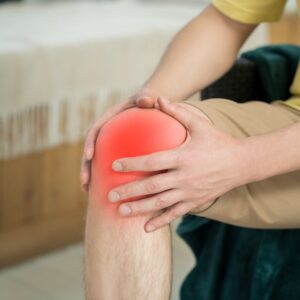Discover the benefits of deep tissue massage techniques at Luna Massage Studio. Relieve pain, improve mobility, and enhance your well-being.
Understanding Deep Tissue Massage
What is Deep Tissue Massage?
Deep tissue massage is a specialized massage technique focused on realigning deeper layers of muscles and connective tissue. It is particularly beneficial for chronic aches and pains, as well as contracted areas such as stiff necks, low back tightness, and sore shoulders. Unlike relaxation massage, deep tissue massage involves slower strokes and deeper pressure to reach the sub-layer of muscles and fascia.
The History of Deep Tissue Massage
The history of deep tissue massage dates back to ancient civilizations where therapeutic massage techniques were used for healing. The method has evolved over centuries, incorporating various techniques from different cultures. It gained significant recognition in the 19th century when Swedish massage techniques were introduced and further refined to include deeper pressure.
Differences Between Deep Tissue and Other Massages
Deep tissue massage differs from other types of massage primarily in its focus and intensity. While Swedish massage uses light to moderate pressure with long, flowing strokes to promote relaxation, deep tissue massage targets the deeper layers of muscle and fascia. This technique uses slower, more forceful strokes, making it more effective for treating chronic pain and muscle injuries.
Who Should Consider Deep Tissue Massage?
Deep tissue massage is ideal for individuals experiencing chronic muscle tension, pain, or injuries. Athletes, people with physically demanding jobs, and those suffering from conditions like sciatica, plantar fasciitis, or fibromyalgia may benefit significantly from this type of massage. However, it is essential to consult with a therapist to ensure it is suitable for your specific needs.
Common Misconceptions About Deep Tissue Massage
One common misconception is that deep tissue massage must always be painful to be effective. While some discomfort is normal, especially when addressing tight muscles, a skilled therapist will ensure the pressure is within your tolerance level. Another misconception is that deep tissue massage is only for athletes; in reality, anyone with chronic pain or muscle tension can benefit.
Safety and Precautions
Safety is paramount when it comes to deep tissue massage. It is crucial to communicate openly with your therapist about any pain, discomfort, or medical conditions you have. Certain health issues, such as blood clots, infections, or recent surgeries, may contraindicate deep tissue massage. Always consult with a healthcare provider and inform your therapist of your health history to ensure a safe and effective session.
Benefits of Deep Tissue Massage
Pain Relief
Deep tissue massage is highly effective in providing relief from chronic pain. By targeting the deeper layers of muscle and connective tissue, this technique helps release muscle tension, break down scar tissue, and alleviate pain. Many clients experience significant relief from conditions such as sciatica, lower back pain, and fibromyalgia after just a few sessions.
Improved Mobility
One of the key benefits of deep tissue massage is improved mobility. Tight muscles and fascia can restrict movement, leading to stiffness and discomfort. Deep tissue massage works to loosen these tight areas, enhancing flexibility and range of motion. This is particularly beneficial for athletes and individuals recovering from injuries.
Stress Reduction
While deep tissue massage is more intense than other types of massage, it can also be profoundly relaxing. The focused pressure and slow strokes help to calm the nervous system, reducing stress and promoting a sense of well-being. The release of endorphins during the massage further contributes to this stress-relieving effect.
Enhanced Recovery
Deep tissue massage plays a crucial role in recovery from physical exertion or injury. By increasing blood flow and reducing inflammation, it helps to speed up the healing process. This makes it an excellent choice for athletes and anyone involved in strenuous physical activities. Regular sessions can help prevent injuries and improve overall physical performance.
Improved Circulation
The techniques used in deep tissue massage, such as deep strokes and friction, help to improve circulation. Better blood flow means that more oxygen and nutrients are delivered to the muscles, aiding in their repair and growth. Improved circulation also helps to remove toxins and metabolic waste from the body, promoting overall health.
Long-term Health Benefits
Regular deep tissue massage sessions can lead to long-term health benefits. These include improved posture, reduced anxiety and depression, better sleep quality, and enhanced immune function. By addressing the root causes of muscle tension and pain, deep tissue massage helps to maintain a healthy and balanced body.
Techniques Used in Deep Tissue Massage
The Basics of Deep Tissue Techniques
Deep tissue massage involves slow, deliberate strokes and deep finger pressure to relieve tension from the deepest layers of muscles and connective tissues. The therapist uses their fingers, thumbs, fists, and even elbows to apply the necessary pressure. This method focuses on specific areas of tension and pain, working methodically to release knots and realign muscle fibers.
Myofascial Release
Myofascial release is a technique used to treat the fascia, the connective tissue surrounding muscles. This technique involves applying sustained pressure and movement to the fascia to eliminate pain and restore motion. By stretching and loosening the fascia, myofascial release helps reduce pain and improve flexibility.
Stripping
Stripping involves applying deep pressure along the length of the muscle fibers. This technique is particularly effective for breaking down adhesions and scar tissue that can form after injuries. Stripping helps to realign muscle fibers, improve blood flow, and promote healing. It’s commonly used on large muscle groups like the legs and back.
Friction Techniques
Friction techniques involve small, circular movements applied to a specific area with deep pressure. This method is used to break down adhesions and scar tissue, particularly in tendons and ligaments. Friction helps to increase blood flow and reduce inflammation, promoting faster recovery from injuries.
Trigger Point Therapy
Trigger point therapy focuses on identifying and releasing trigger points, which are tight areas within muscle tissue that cause pain in other parts of the body. By applying direct pressure to these points, the therapist can alleviate pain and tension. This technique is especially beneficial for treating conditions like migraines, neck pain, and lower back pain.
Stretching and Mobility Techniques
Incorporating stretching and mobility techniques into deep tissue massage helps to improve the range of motion and flexibility. These techniques involve passive stretching, where the therapist gently moves the client’s limbs, as well as active stretching, where the client participates. Stretching helps to lengthen tight muscles, reduce stiffness, and enhance overall mobility.
How Deep Tissue Massage Alleviates Pain
Targeting Muscle Tension
Deep tissue massage effectively alleviates pain by targeting muscle tension. This technique works by applying sustained pressure to the deeper layers of muscles and connective tissues. By focusing on areas of chronic tension, the massage helps to release tight muscles, reduce stiffness, and improve overall muscle function.
Breaking Down Scar Tissue
Scar tissue can form after injuries or surgeries, leading to pain and restricted movement. Deep tissue massage helps break down scar tissue by using techniques such as friction and stripping. These methods promote the remodeling of scar tissue, enhancing flexibility and reducing pain. Regular sessions can significantly improve the mobility of affected areas.
Reducing Inflammation
Inflammation often accompanies muscle pain and can exacerbate discomfort. Deep tissue massage reduces inflammation by improving blood circulation and promoting the flow of oxygen and nutrients to the muscles. This helps to remove metabolic waste and reduce the buildup of inflammatory substances, leading to pain relief and faster healing.
Enhancing Blood Flow
Improved blood flow is a key benefit of deep tissue massage. The techniques used in this type of massage help to dilate blood vessels and increase circulation. Enhanced blood flow delivers more oxygen and nutrients to the muscles, aiding in repair and recovery. It also helps to remove toxins and waste products, reducing muscle soreness and pain.
Pain Relief through Endorphin Release
Deep tissue massage stimulates the release of endorphins, the body’s natural painkillers. Endorphins help to reduce pain and promote a sense of well-being. This natural pain relief mechanism is especially beneficial for those suffering from chronic pain conditions. Regular deep tissue massage sessions can help manage pain without the need for medication.
Case Studies and Testimonials
Many clients have experienced significant pain relief through deep tissue massage. Case studies and testimonials highlight the effectiveness of this therapy in treating various conditions, from chronic back pain to sports injuries. Clients often report reduced pain, improved mobility, and an overall enhancement in their quality of life after undergoing deep tissue massage at Luna Massage Studio.
Deep Tissue Massage for Athletes
Performance Enhancement
Deep tissue massage can significantly enhance athletic performance. By targeting specific muscle groups, it helps to increase flexibility and range of motion. This allows athletes to perform movements more efficiently and with greater power. Regular sessions can also help to prevent injuries by keeping muscles supple and responsive.
Injury Prevention
One of the primary benefits of deep tissue massage for athletes is injury prevention. This massage technique helps to identify and address muscle imbalances and tight spots before they lead to injuries. By maintaining optimal muscle condition, athletes can reduce the risk of strains, sprains, and other common sports injuries.
Recovery Acceleration
Athletes often experience muscle soreness and fatigue after intense training or competition. Deep tissue massage accelerates recovery by promoting blood flow and reducing muscle inflammation. This helps to clear out lactic acid and other metabolic waste products, speeding up the healing process and allowing athletes to return to training sooner.
Addressing Common Sports Injuries
Deep tissue massage is particularly effective for treating common sports injuries such as tendonitis, shin splints, and hamstring strains. The targeted pressure and specific techniques used in this massage help to break down scar tissue, reduce inflammation, and improve flexibility. This can significantly shorten recovery times and improve overall function.
Tailored Techniques for Different Sports
Different sports place varying demands on the body, and deep tissue massage can be tailored to meet these specific needs. For example, runners may benefit from focused work on the legs and hips, while swimmers might need attention on the shoulders and back. Our therapists at Luna Massage Studio customize each session to address the unique requirements of each athlete.
Success Stories from Athlete Clients
Many athletes have found deep tissue massage to be a game-changer in their training and recovery routines. Success stories from our clients at Luna Massage Studio highlight the dramatic improvements in performance and reduction in injury rates. Testimonials from both professional and amateur athletes underscore the transformative impact of regular deep tissue massage.
Preparing for Your Deep Tissue Massage Session
How to Choose the Right Massage
Choosing the right massage involves understanding your specific needs and goals. Consider the areas of your body that require attention and the type of relief you are seeking. Deep tissue massage is ideal for those experiencing chronic muscle pain, tension, or recovering from an injury. Consult with our therapists at Luna Massage Studio to determine if deep tissue massage is the best option for you.
What to Communicate to Your Therapist
Clear communication with your therapist is crucial for a successful deep tissue massage session. Inform your therapist about any specific areas of pain or discomfort, your medical history, and any previous injuries. Discuss your pain tolerance and preferred pressure levels to ensure a comfortable and effective session. Open dialogue helps tailor the massage to your unique needs.
Pre-Massage Tips and Preparations
To get the most out of your deep tissue massage, there are several preparations you can make. Stay hydrated before your session, as hydration helps to flush out toxins released during the massage. Avoid heavy meals or alcohol beforehand. Arrive a few minutes early to relax and discuss any last-minute concerns with your therapist. Wearing comfortable clothing that is easy to remove is also recommended.
Understanding Your Pain Points
Identifying and understanding your pain points is essential for targeted treatment. Before your session, take note of any areas that feel particularly tense or sore. Consider any activities or habits that may contribute to your muscle tension. Sharing this information with your therapist will help them focus on the areas that need the most attention, ensuring an effective massage.
What to Wear and Bring
For a deep tissue massage session, wear loose, comfortable clothing that you can easily change out of. Some clients prefer to bring their own robe or slippers for added comfort. It’s also a good idea to bring a water bottle to stay hydrated before and after the massage. If you have any specific preferences for oils or lotions, feel free to bring them along.
Setting Realistic Expectations
Setting realistic expectations is key to a satisfying deep tissue massage experience. Understand that while some discomfort is normal, the goal is to relieve tension and pain, not to cause additional stress. Communicate with your therapist if the pressure is too intense. Remember that significant relief often requires multiple sessions, especially for chronic issues. Trust the process and give your body time to heal and respond to the treatment.
What to Expect During and After Your Session
The Initial Consultation
Before your deep tissue massage begins, you will have an initial consultation with your therapist. This is an opportunity to discuss your medical history, any areas of concern, and what you hope to achieve from the session. The therapist will explain the process, answer any questions, and ensure you are comfortable and informed before starting.
Step-by-Step Breakdown of the Session
A deep tissue massage session typically starts with a warm-up of the muscles using lighter pressure. The therapist will then gradually increase the pressure, focusing on specific areas of tension. Techniques such as myofascial release, friction, and trigger point therapy are used to target deeper layers of muscle and connective tissue. The session is personalized to address your unique needs and pain points.
Pain vs. Discomfort: What’s Normal?
It’s important to differentiate between pain and discomfort during a deep tissue massage. Some discomfort is normal as the therapist works through tight muscles and adhesions. However, it should never be painful. Communicate openly with your therapist about the pressure and any discomfort you experience. The goal is to achieve relief without causing undue stress or injury.
Post-Massage Care and Recommendations
After your deep tissue massage, it’s essential to follow post-massage care recommendations. Drink plenty of water to help flush out toxins released during the massage. Rest and avoid strenuous activities for the remainder of the day. Applying ice to any particularly sore areas can help reduce inflammation. Your therapist may also provide specific stretches or exercises to maintain the benefits of the massage.
Common Post-Session Experiences
It’s normal to feel some soreness or stiffness following a deep tissue massage, similar to the feeling after an intense workout. This should subside within a day or two. Many clients also report feeling more relaxed and having an improved range of motion. Increased hydration and gentle movements can help alleviate any temporary discomfort.
Following Up and Scheduling Future Sessions
To maximize the benefits of deep tissue massage, regular sessions may be necessary. Discuss with your therapist the appropriate frequency for your needs. Consistent treatments can help maintain muscle health, prevent injuries, and manage chronic pain. Booking future sessions in advance ensures continuity of care and helps you stay on track with your wellness goals.
Choosing the Right Therapist at Luna Massage Studio
Qualifications and Certifications of Our Therapists
At Luna Massage Studio, our therapists are highly qualified and certified in various massage techniques, including deep tissue massage. Each therapist undergoes rigorous training and holds certifications from recognized institutions. Their expertise ensures that you receive the highest standard of care tailored to your specific needs.
Specializations and Expertise
Our therapists specialize in a range of massage therapies, allowing them to address diverse client needs. Whether you require pain relief, injury recovery, or stress reduction, our team has the expertise to provide effective treatment. They continuously update their skills through ongoing education to stay current with the latest techniques and advancements in massage therapy.
Client-Therapist Matching Process
We believe that the client-therapist relationship is crucial for a successful massage experience. Our client-therapist matching process ensures that you are paired with a therapist who best meets your needs and preferences. During your initial consultation, we gather information about your specific concerns and goals to match you with the right professional.
Client Reviews and Feedback
Client feedback is essential to us at Luna Massage Studio. We take pride in our positive reviews and testimonials from satisfied clients. Hearing about others’ experiences can help you feel confident in choosing our services. We encourage you to read our reviews and share your own experience to help us continually improve.
How to Book Your Session
Booking a session at Luna Massage Studio is simple and convenient. You can schedule your appointment online through our website or by calling our studio directly at (703) 254-0422. Our friendly staff is available to assist you with any questions and to help you find a time that fits your schedule. We recommend booking in advance to secure your preferred time slot.
Luna Massage Studio’s Commitment to Excellence
Our commitment to excellence is reflected in every aspect of our service. From the initial consultation to post-massage care, we strive to provide a seamless and rewarding experience for our clients. We are dedicated to your well-being and work diligently to ensure that each session meets your expectations. At Luna Massage Studio, your comfort and satisfaction are our top priorities.
Conclusion
Why Choose Luna Massage Studio for Deep Tissue Massage?
Choosing Luna Massage Studio for your deep tissue massage ensures that you receive top-notch care from experienced and certified therapists. Our team is dedicated to helping you achieve your wellness goals through personalized treatment plans tailored to your needs. Whether you’re seeking relief from chronic pain, enhanced athletic performance, or simply a way to unwind, we have the expertise to assist you.
Book Your Appointment Today
Don’t wait any longer to experience the transformative benefits of deep tissue massage. Our convenient online booking system and friendly staff make scheduling your session easy. Visit our website to book an appointment or call us at (703) 254-0422. Take the first step towards a healthier, more relaxed you.
Hear from Our Satisfied Clients
Our clients’ testimonials speak volumes about the quality of care at Luna Massage Studio. Read our reviews to learn more about how deep tissue massage has made a positive impact on their lives. Their stories of pain relief, improved mobility, and overall wellness are a testament to our commitment to excellence.
Ongoing Support and Care
At Luna Massage Studio, we believe in providing ongoing support and care to our clients. After your deep tissue massage, our therapists will offer recommendations for maintaining the benefits of your session. This includes advice on stretches, exercises, and follow-up appointments to ensure lasting results.
Our Location and Contact Information
We are conveniently located at 3461 Berkeley St, Alexandria, VA 22302. For any inquiries or to book an appointment, please contact us at (703) 254-0422 or email us at kelly@lunamassagestudio.com. We look forward to welcoming you to Luna Massage Studio and helping you achieve your wellness goals.
Book your session with Luna Massage Studio Today.
FAQs
Q: What is your address?
A: 3461 Berkeley Street Loft 9, Alexandria, VA 22302
Q: What services do you offer?
A: We offer Deep Tissue Massage, Swedish Massage, Sports Massage, Prenatal Massage, and Reiki Healing.
Q: How do I book an appointment?
A: You can book an appointment online through our website or by calling us at (703) 254-0422.
Q: What should I expect during a deep tissue massage session?
A: During a deep tissue massage session, expect a thorough consultation with your therapist, deep and targeted pressure on specific muscle groups, and personalized techniques to address your unique needs. Post-session, you may feel some soreness similar to after an intense workout, which should subside in a day or two.
Q: Is deep tissue massage suitable for everyone?
A: Deep tissue massage is generally safe for most people, but it may not be suitable for individuals with certain medical conditions. It’s important to consult with your healthcare provider and communicate any health concerns with your therapist before starting treatment.












